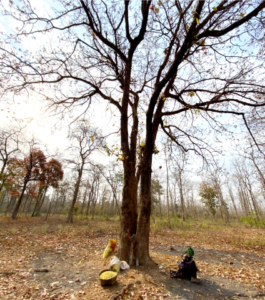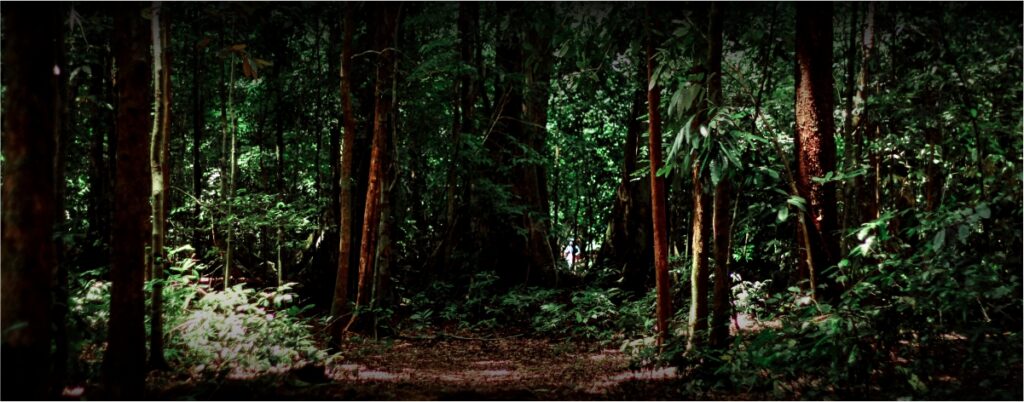From the CPO's Desk
Strategies for Forest-Dependent
Livelihoods in Central India: The Potential of Gadchiroli

Author
Shri. Swapnil Girade
Chief Program Officer & Head (In-Charge), STRC

Central India’s forests are a lifeline for millions of tribal and forest-dependent families, providing food, income, and cultural identity. Despite this natural wealth, communities in regions like Madhya Pradesh, Chhattisgarh, and Maharashtra’s Gadchiroli face persistent poverty and limited institutional support. This document outlines strategic pathways for strengthening forest-based livelihoods, drawing from successful models in Madhya Pradesh and Chhattisgarh and exploring the untapped potential of Gadchiroli.
Key strategies includes:
1. NTFPs: Sustainable Use and Value Addition
Non-Timber Forest Produce (NTFP) like tendu, mahua, chironjee, bamboo, lac, and honey contribute up to 60% of tribal household income (TRIFED, 2022) and play a vital role in sustaining tribal livelihoods particularly in forested regions of central India. To ensure both ecological suatainability and enhanced income generation. Focusing key strategies can be adopted.
- Sustainable harvesting (ecological calendars, pruning, rotational collection)
- Village-level processing (drying, grading, packaging)
- Value addition (mahua syrup, sal butter, herbal teas, bamboo crafts)
- MSP implementation to ensure fair pricing
2. Empowering Communities through CFR
The Forest Rights Act (2006) recognizes the collective rights of tribal communities over forests. In Madhya Pradesh and Chhattisgarh, over 30,000 villages have used Community Forest Resource (CFR) rights to:
- Regulate bamboo and tendu trade
- Improve conservation outcomes
- Build village funds for health, education, and infrastructure
3. Market Linkages and Enterprise Models
Overcoming market exploitation involves:
- Promoting FPOs and SHGs for collective marketing
- Leveraging digital platforms like Van Dhan Vikas, e-NAM, and Tribes India
- Enhancing branding and certification (e.g., GI tagging, tribal labels)
- Building entrepreneurial and packaging skills
Success stories include M.P. State Minor Forest Produce (Trade and Development) Cooperative Federation and ‘JAWADHU’ Hills, Tribal Farmer Producer Company, Chhattisgarh, which have boosted tribal incomes by up to 50%.
4. Diversification and Eco-Tourism
To reduce dependence on seasonal NTFPs:
- Encourage agroforestry, bamboo plantations, medicinal plant farming
- Promote ecotourism (forest walks, homestays, wildlife interpretation)
- Develop microenterprises (bamboo craft, honey processing, herbal medicines)
Notable is Chhattisgarh’s Godhan Nyay Yojana, which monetizes cow dung for bio-fertilizer production—demonstrating scalable bio-economy models.
5. Gadchiroli: A Forest Economy in Waiting
With 75% forest cover and 38% tribal population, Gadchiroli has strong foundations:
- 1,400+ villages with CFR rights over 4.5 lakh hectares
- Rich bamboo, lac, mahua, and sal forests
- Successful examples like Mendha Lekha earning significant revenue annually from bamboo
Opportunities:
- Bamboo: Leverage post-2017 legal reforms for trade and crafts
- Lac: Utilize Kusum-Palash belts for resin, processing, and jewelry
- Ecotourism: Build circuits around tribal culture and tiger safari’s
6. Lessons from MP & Chhattisgarh : Roadmap for Gadchiroli
| State | Initiative | Outcome |
|---|---|---|
| Madhya Pradesh | CFR+Tribal FPOs (Dindori, Mandla) | 40% rise in community NTFP income |
| Chhattisgarh | MSP for 67 NTFPs+Van Dhan Kendras | Better pricing, increased women’s participation |
| Chhattisgarh | Godhan Nyay Yojana+Livelihood Clusters | Job creation via forest-linked rural enterprises |
What Gadchiroli Offers
Strengthen CFR Implementation: Post-title support, management plans, training
- Expanding Van Dhan Clusters and FPOs: For bamboo, lac, mahua, chironjee
- Policy Convergence: Leverage FRA, MGNREGA and NRLM
- Eco-Tourism Zones: Empower SHGs and youth as guides and interpreters
Collectively Madhya Pradesh and Chhattisgarh have demonstrated that with legal recognition, market access, and policy support, forest-based economies can flourish. Gadchiroli has all the ingredients-natural wealth, community governance, and cultural richness-to lead a similar transformation. With strategic investment and convergence, it can emerge as a model for sustainable, inclusive, and tribal-led forest development in India.





